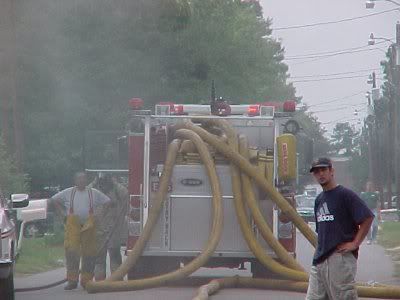I am starting the process of learning the tankers and engines at my dept. Is there anyone out there that can give me a few pointers or any situations that you may have been a part of that will help me have a better understanding of this equipment. I would like input on things that can go wrong as well as all the good things. I want to be prepared to answer any questions that I may have asked of me to show the guys at my dept that I have done a little research on my own. Thanks in advance
Tags:
Replies to This Discussion
-
Permalink Reply by Ken Zaydel on April 8, 2008 at 7:59am
-
Do not confuse the tanker and the engine as being one in the same or think that they operate the same because they both have pumps and haul water. They are two entirely different animals. Engine operations for your area will vary based on whether it is rural or a metro area. There are literaly thousands of possible scenerios you need to train for and be prepared to handle. Things like hose size, do you have 5 inch or 3 inch supply,how to handle long drive way lays or areas you can not fit an engine. Tanker operations can be worse than engine ops. When you are shuttling water lots of things have to be taken into consideration; driving time, road conditions, avalible gpm from the water source. With tanker operations it may be better to drive further if fill time and location are better then a low flow source with poor access. Get with the guys at your agency and have them teach you the way they operate. As much as we in the fire service would like to think we are all the same, we all operate differently. If you will send me an email address I will send you some training material to help you.
-
Permalink Reply by Engineer k7 on September 2, 2008 at 1:52pm
-
Take all of what everyone has said to mind and heart. Train Train Train, but take everything one step at a time. I am an Intro To Pumps Instructor at our regional fire school, I came up with a saying years ago "just remember one thing the lives of those who are on the hoselines lay in the palm of your hands".
-
Permalink Reply by Mike Schlags (Captain Busy) Retd on September 2, 2008 at 3:03pm
-
Hello from Santa Barbara, Good hit using the FFN to give you a hand with learning your job. Take a look at a new discussion that I just posted called, Wildland Firefighting Water Supplies.
You will find this valuable for a couple of reasons. First off, one of the hardest evolutions for an engineer is drafting water from a static water source, whether it be a large body of water (lake, reservoir), a stream, swimming pool or portable tank.
As an apparatus driver / fire engineer, your number one priority above anything else is to be able to get water to the folks at the end of the hose line. All the other things like Code 3 driving, spotting the apparatus at a hydrant, conducting basic hose evolutions, etc. are all very important but getting water is always one of the more critical things to get accomplished when suppressing a fire.
I've shared four (4) new videos that show some ways that a Type III Heavy Brush can get water. It doesn't matter if you are in a Type 1 engine or a Type III, pumps are pumps and the portable pump option is explored here for your use and review.
Oh... one more thing, before engaging the pump, make sure all of your discharges are closed!

Hope this helps you out. If you need any further assistance, I'm a just a few keyboard clicks away!
TCSS, Mike from Santa Barbara
mschlags@yahoo.com
-
Permalink Reply by joseph s kennedy jr on September 8, 2008 at 1:54pm
-
know every aspect of you appartus
-
Permalink Reply by Engineer k7 on October 24, 2008 at 10:12pm
-
An off the wall question. How many really use fireground hydraulics?
-
Permalink Reply by united 289..{Dave} on October 24, 2008 at 11:30pm
-
You use it on every fire scene. You just don't realize it.
- ‹ Previous
- 1
- 2
- Next ›
Specialty Websites
Find Members Fast
Firefighting Videos
© 2025 Created by Firefighter Nation WebChief.
Powered by
![]()
Badges | Contact Firefighter Nation | Privacy Policy | Terms of Service